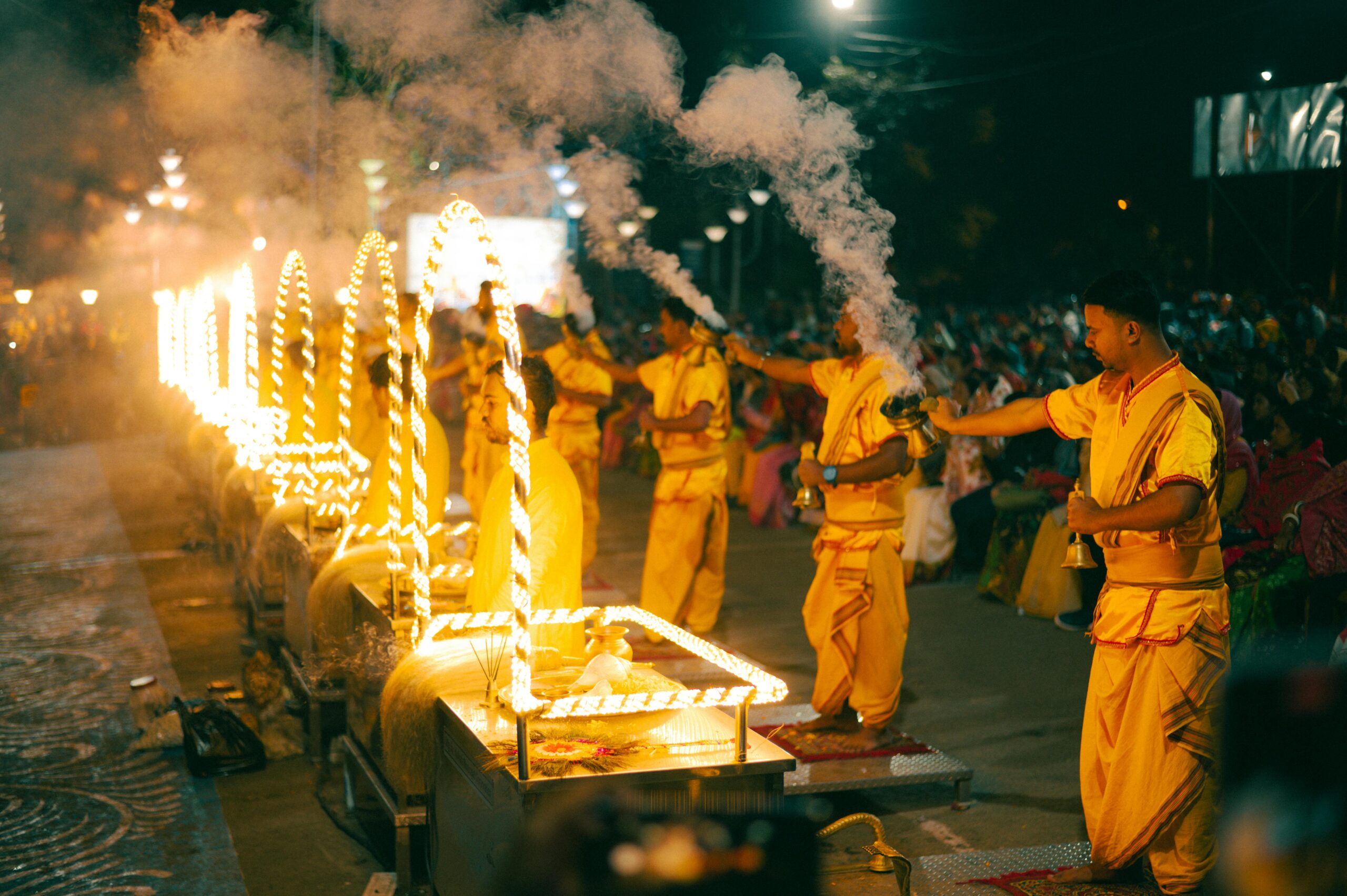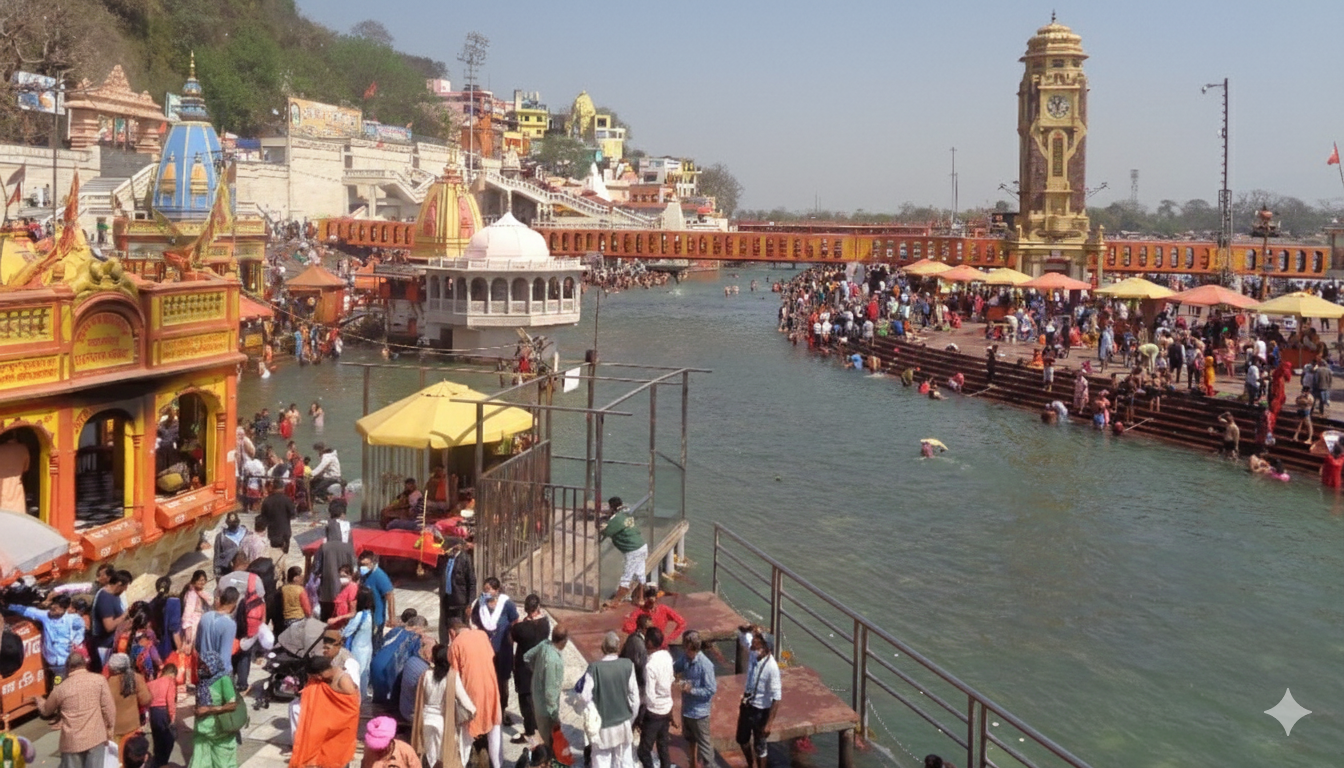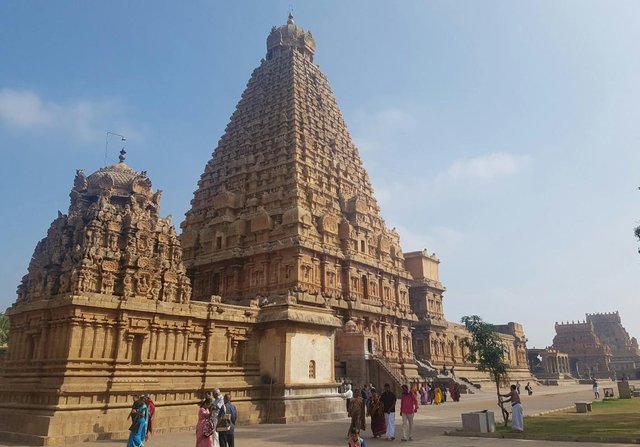A BRIEF ABOUT LORD KRISHNA
On and off the record, 330 million – or in local slang Muppathi Mukkodi – gods are worshiped across India, a country divided into 29 states and 7 union territories, speaking around 28 different languages across its length and breadth. Yet one divine name finds its relevance everywhere, among every kind of people, surviving countless generations without losing an ounce of its charm — that is none other than Lord Krishna.
Lord Krishna is believed to have been born in Mathura, around 150 km from India’s capital, Delhi, and 50 km from Agra. The divine land of Lord Krishna still breathes with stories of His birth, childhood mischiefs, youthful love, and the wisdom of His adulthood. Mathura continues to live and reverberate in His memory, welcoming lakhs of devotees every day.
WHY MATHURA IS SO FAMOUS
When rivers defined the divinity of many holy places, the River Ganga was connected to several states through cities like Kashi and Haridwar. But in Mathura, it is the River Yamuna that flows through the life and legend of Krishna. The calm and silently flowing Yamuna holds the same divinity as any temple here.
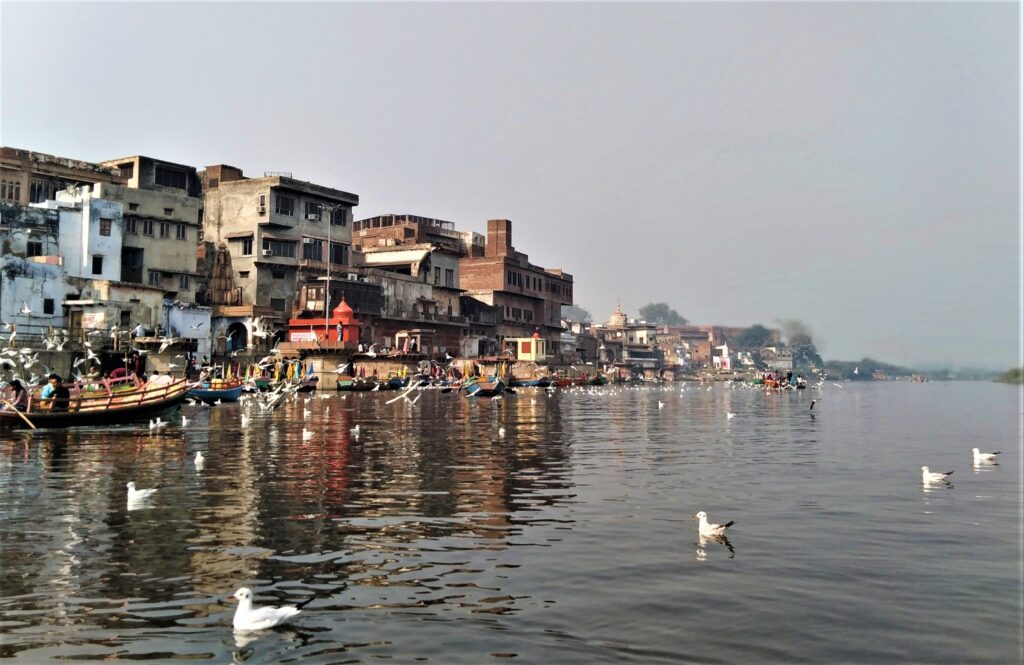
Even today, the core of the area known as Brij Bhumi is divided by the riverbanks into two parts — the eastern and western sides. With approximately 5,000 temples dedicated to Lord Krishna in this small city, the deep and timeless bond between Krishna and Mathura is beyond question.
AN UNEXPECTED WOW MOMENT
During a trip to explore Mathura, we landed in another temple first, as we missed the correct road to the actual destination. It was located very close to the highway and known as Radha Vrindavan Chandra Mandir. There was nothing special except that the temple was huge, peaceful, with architectural excellence of modern times, constructed with the latest know-how and technology.
It was a type of building, a modern one in design and appearance, and made with the latest modern building designs, materials too. The white marble structure was really appealing to all, with specially designed stones fixed in intermediate locations, making it more attractive to everyone. Seemed to be a type of building that ‘money can do anything type’ and it was true too, almost, even from the view of the grand arch entrance gate leading to the temple from outside.
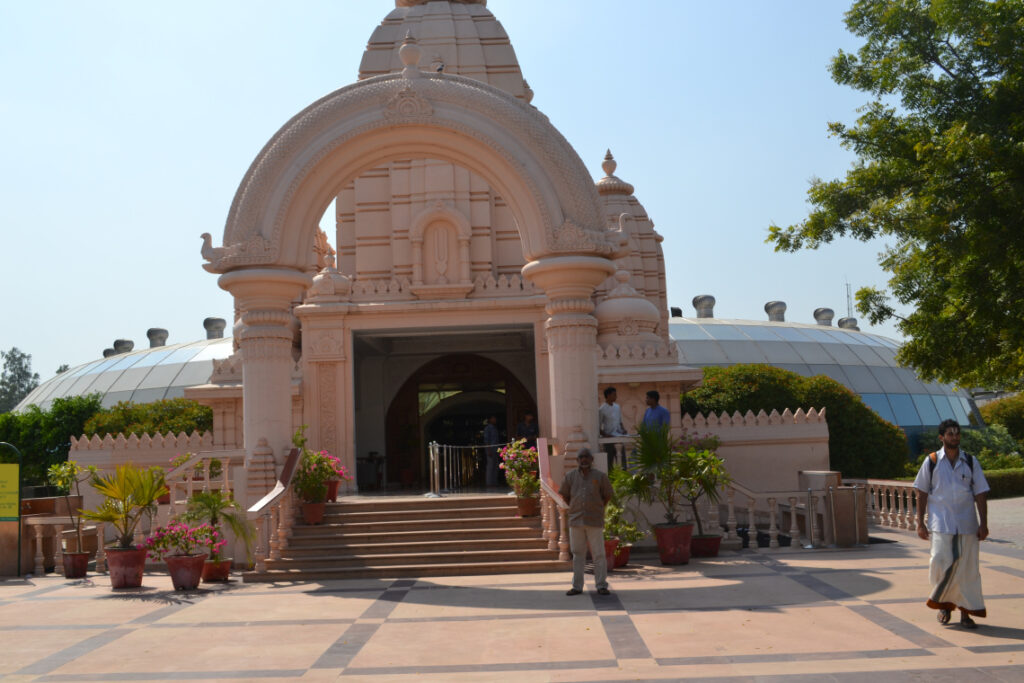
The temple was built by ISKCON (International Society for Krishna Consciousness) founder, fulfilling his dream of making a temple for Lord Krishna and His brother in the same building in a place where they had played together, ie, Mathura. The main deity thus belongs to them with other paintings of Lord Krishna’s life depicted on the walls and other idols.
But the real wow moment from visiting this temple was when we came to know about the volume of effort they were putting in very religiously every day. This temple provides meals to poor kids, covering almost every school in the district and nearby villages, a continuation of such work after successful implementation by ISKCON, Bangalore.
The temple is also known as the Akshaya Patra temple, a name provided very thoughtfully, taken from the Puranas, which literally means a Never-Ending Food bowl. The preparation of food is with the help of huge machines, primarily for chappathi (Roti) making, from mixing of wheat flour to the final shape, which can make 1000s of rotis within an hour or so.
THE MAIN DESTINATION REACHED
On an honest note, this was a temple that had come on our way because of not knowing the exact route to our original destination, but it was equally worth it, like any historical temple, by witnessing how they were making a real change to society. Soon, we proceeded to the location of Lord Krishna’s birthplace by getting to know about the road to follow.

As we reached very close to the temple location, it seemed like, despite being a destination where so many people across India come daily and even foreigners, the place has not received its due or recognition or its real value, which it possesses. Congested roads with no signboards for how to get there made us a little bit confused again. It is not about changing the aesthetic originality of the temple, but the infrastructure of the location could have been developed to make the life or travel of visitors easier.
But it was not a concern to be bothered about, as soon as we realized the importance of this place that looks like still enveloped with the divine aura spread by Lord Krishna with the presence of thousands of devotees chanting Hare Krishna as we entered the road towards the temple complex in which the prison where Lord Krishna was born is still preserved in its original condition.
A RESEMBLANCE TO WHAT IT WAS 5000 YEARS AGO
The street looked like they were part of ancient times, with cows wandering as if they belonged to them on logical thought, based on Lord Krishna’s life. The temple premises or the Janmasthan, turned out to be way different than how the street looked. The temple and the complex were treated as very sensitive locations with the presence of heavy security found all over the place. Mobile phones and cameras were banned inside the temple premises, so special arrangements for depositing that stuff safely were available at the entrance.

The temple is constructed in such a way that it is exactly at the location where Lord Krishna was believed to be born, as per the stories we came across. Once inside and being in the place where Lord Krishna was born, precisely the prison area was changed the course of thought was changed to divine and soul-filling. The special ambience and silence, despite the presence of many visitors inside, have truly made it more memorable. Many faces from many places and states were found to be content with the blessed moment of being in such a place.
THE BIRTH SECRET
Kansa, the cruel maternal uncle of Lord Krishna, wanted to kill all the sons of His parents, as there was a prediction through a voice from the sky during his sister Devaki’s wedding with Vasudev, the precise reason why Lord Krishna’s parents were being imprisoned, to kill each child born to them. The story goes like that, this Kansa killed all the 7 newborn babies immediately after birth, and when Lord Krishna was born, Vasudev had escaped from prison and moved far away to a safe home with infant Krishna.
The Janmabhoomi complex consists of a temple known as the Keshav Dev temple, and most of the visitors might consider this to be the temple where Lord Krishna was believed to have been born. This temple, one of the thousands of Lord Krishna temples, is situated within the city, albeit with another name. According to the history books, the main deity was installed by the great-grandson of Lord Krishna around 4000 to 5000 years ago.
THE FAMOUS STEP WELL
Another magnificent location in a walkable distance from the janmasthan that relates to the stories of Lord Krishna is a water body, a step well, known as Potra Kund, with specially designed steps all around. Lord Krishna’s parents used this area for bathing and washing clothes. The steps constructed with red sandstone were maintained carefully by concerned authorities, which looked like free from any major damage.

Mathura, which may also be called as city of temples for the number of divine locations this small city has, opens up another temple while moving in any direction, most likely famous. Dwarakdeesh temple, with the literal meaning of Lord Krishna being the owner of Dwarka, close to the banks of river, was another famous one visited. Relatively new, and it is known for its architectural works and paintings on ceilings.
ON THE BANKS OF SACRED RIVER YAMUNA @ VISHRAM GHAT
A few steps from this temple, flows the sacred and revered river Yamuna in the divine city of Mathura, where people across India would like to visit and do a Parikarma pooja by taking a bath in the holy water of the river Yamuna. The name of the place is Vishram Ghat, where pilgrims gather. It is the central ghat among 24 others, 12 each on either side. This ghat is believed to be the place where Lord Krishna rested after killing the demon Kansa, thus the name Vishram ghat.

Unlike the river Ganga, another sacred river in India, with the amount of divinity it carries across India, flowing through 11 Indian states, which seems furious in many locations, the river Yamuna looked standstill and peaceful, inviting every onlooker on the ghat to take rest by spending some time there, making the name of the ghat meaningful.
It was the start of winter with perfect climate, and standing in the Vishram ghat in the presence of the sacred river Yamuna, with less than 10 steps away, felt like a blissful and dreamlike scenario waiting for years to come. The silent Yamuna River, not so big in width that the other side is just a few meters away, with boats plying with visitors and feathered white birds flying in huge numbers (I am not sure about its name), only added to the charm of the holy river to spend as much time there.
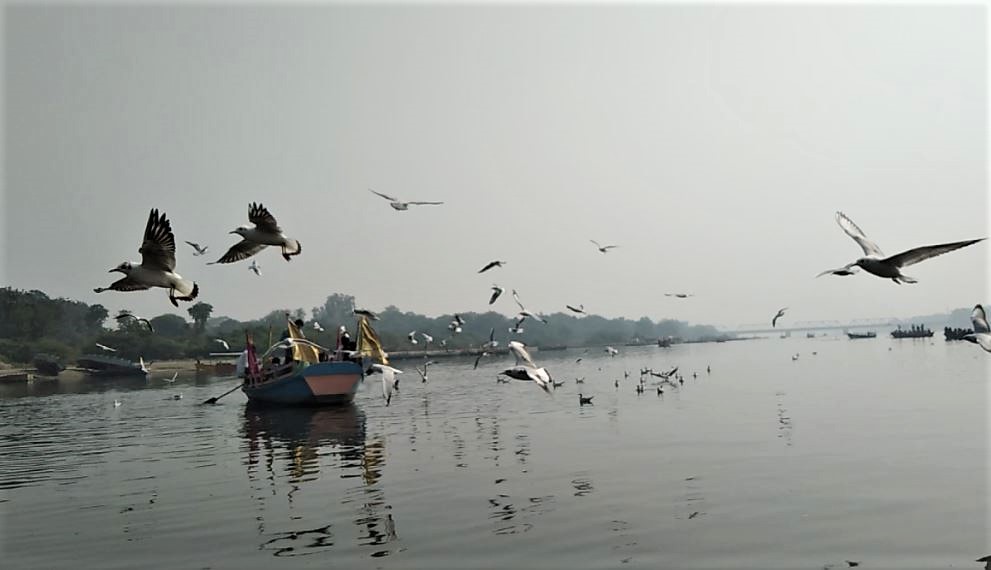
ENJOY THE PEACEFULNESS OF THE RIVER YAMUNA THROUGH BOATING
Made some customary poojas for the departed souls of my father, mother, and a younger brother who left the world at a much younger age, with a heavy heart, and spent some time taking a deep breath while sitting on the banks of this sacred river. A boat ride looked really interesting and a must-do here, and as the thought went by, not much time was required to get into a boat with their planned itinerary, which involved rowing across to reach the other side of the river.
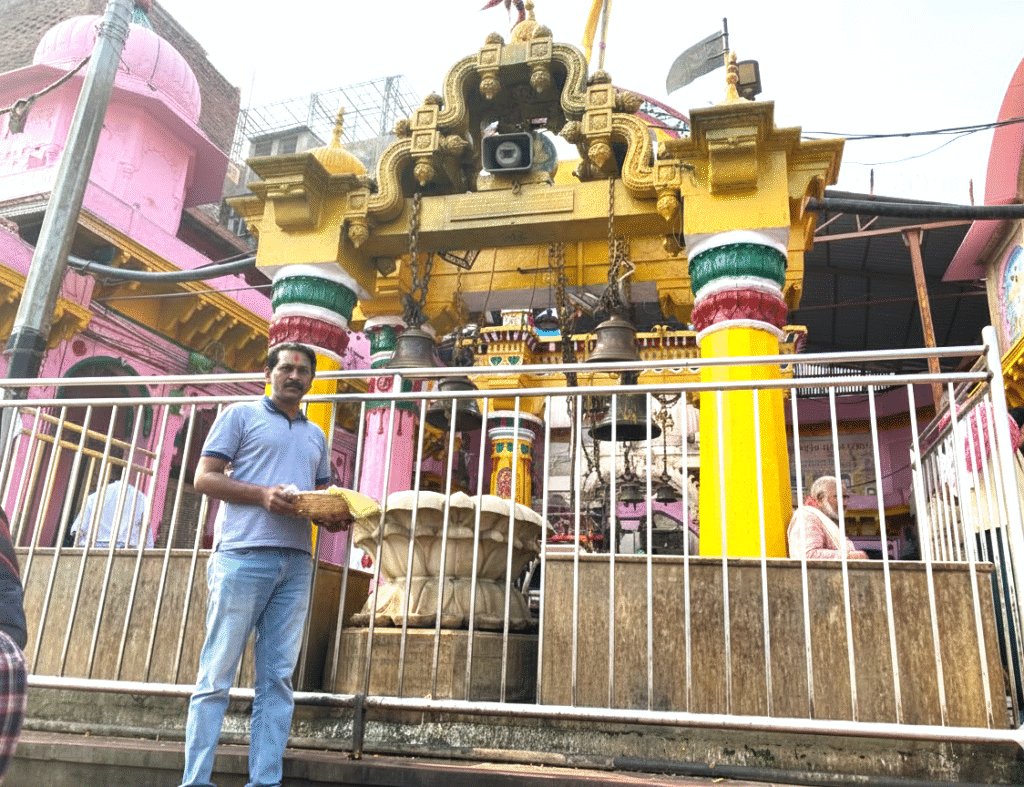
A tiny temple complex inside a village close to the shore, with two or three small buildings, was there, but what seemed to be interesting was the vast difference on either side of the river Yamuna. On one side, the hustle and bustle of a famous tourist location, and on the other side, a pukka village that looked like even basic necessities had yet to reach. The same boat will stay there to bring back and show the important places on the riverbank, mostly related to the stories of Lord Krishna.
Many more temples are famous and special in their own unique ways in Mathura, like Nidhivan and Sevakunj, where time does not feel to moving while enjoying the special place to be in, even in the long queue to have the darshan. So many stories are being told by an old fellow nearby while on the slow-moving line, emphasizing the importance of this place for Lord Krishna and his Rasleela.
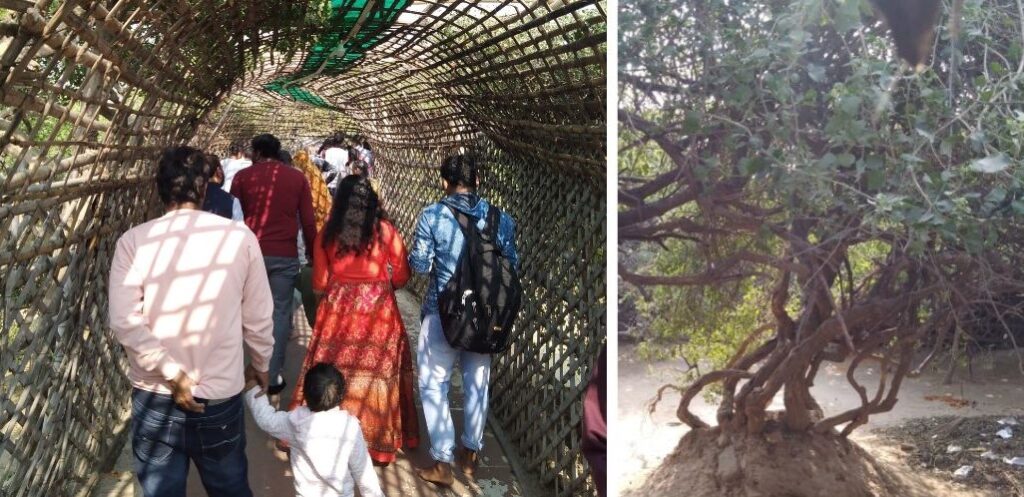
The place was surrounded by Tulsi plants of different types and was astonished by seeing Tulsi being planted as a forest protected by a fence on either side of a small corridor through which the visitors had to walk for the important deities and locations. As per the mythology, this is the place where Lord Krishna, Radha, and the Gopis enjoyed the rasleela. The dances of the visitors after the darshan from the main temple within a dedicated space gathered by many made us helpless but to dance with their moves for a few minutes.
A FOOTNOTE
Mathura remains one of India’s holiest cities — a place that has preserved its divine essence despite centuries of turmoil, invasions, and change. For anyone who wishes to experience the birthplace of India’s most loved deity, this sacred land is a journey into faith itself.
Having visited many Krishna temples, especially Guruvayur in Kerala, I could feel the same deep affection and warmth among devotees here. Mathura carries the weight of centuries of devotion, the echoes of Hare Krishna, and the unbroken bond between the divine and the human — a bond that continues to inspire millions.
Continue your journey along the sacred River Ganga — click here to discover Kashi, the timeless city of temples
Click here for Wikipedia details on Haridwar
TRAVEL INFORMATION
📍 Location
Mathura is a sacred city in the state of Uttar Pradesh, India, situated on the banks of the River Yamuna. It lies approximately 150 km south of Delhi and 50 km north of Agra, forming a golden triangle of spirituality and history along with Vrindavan and Govardhan, which are just 10–20 km away.
🚆 How to Reach
By Air:
The nearest airport is Indira Gandhi International Airport, New Delhi (about 170 km away). From there, Mathura can be reached by road in about 3–4 hours. Another nearby option is Agra’s Kheria Airport (about 60 km).
By Train:
Mathura Junction (MTJ) is one of the major railway stations in North India and is well connected to almost all major cities — Delhi, Mumbai, Kolkata, Chennai, Jaipur, and Varanasi. Trains like the Shatabdi Express and Taj Express frequently stop here.
By Road:
Mathura is conveniently located on National Highway 19 (previously NH-2) connecting Delhi and Agra. Regular UPSRTC and private buses operate from Delhi, Agra, Jaipur, and Lucknow. Taxis and self-drive options are also available and comfortable for short trips.
🕉️ Best Time to Visit
October to March is the ideal time to visit Mathura when the weather remains pleasant and comfortable for temple visits and riverbank activities. The winter months bring a divine calmness to the Yamuna and are perfect for boating and long evening walks around Vishram Ghat.
If you want to witness Mathura in its most vibrant spirit, plan your trip during:
- Janmashtami (August/September): Celebration of Lord Krishna’s birth — the entire city turns into a festival of lights, chants, and devotion.
- Holi (February/March): The world-famous Braj Holi, celebrated in Mathura and Vrindavan, is a once-in-a-lifetime experience of color, music, and divine joy.
Avoid peak summer months (April to June) as temperatures can rise above 40°C, making daytime travel uncomfortable
🧭 Travel Tips & Stay Options
✨ Travel Tips
- Plan Early: If you are visiting during Janmashtami or Holi, book accommodations well in advance as the city gets extremely crowded.
- Footwear: Many temples require you to leave footwear outside; carry a light pair that’s easy to remove.
- Clothing: Dress modestly, especially when visiting temples or holy sites. Cotton wear is ideal in summer, while a light sweater is enough for winter evenings.
- Photography: Cameras and mobile phones are not allowed inside the Krishna Janmabhoomi Temple, so plan accordingly.
- Local Transport: Auto-rickshaws and e-rickshaws are easily available. However, be ready for narrow lanes and occasional traffic jams near temple areas.
- Boating: Try to experience the evening aarti at Vishram Ghat — you can also enjoy a peaceful boat ride during sunset.
- Food: Don’t miss Mathura’s famous pedas (milk sweets) and lassi. Many eateries serve pure vegetarian fare cooked without onion or garlic.
🏨 Stay Options
1. ISKCON Guest House (Vrindavan)
A peaceful spiritual retreat located within walking distance of the ISKCON Temple. Clean rooms, simple vegetarian meals, and morning prayers make it a divine stay for pilgrims.
2. Hotel Brijwasi Lands Inn (Mathura)
A reputed hotel offering modern comforts, an in-house restaurant, and proximity to the railway station — ideal for families and business travelers alike.
3. Nidhivan Sarovar Portico (Vrindavan)
A premium stay option for those looking for comfort and convenience, with well-furnished rooms and modern amenities, close to all major temples.
4. Radha Ashok (Mathura)
Set amid greenery, this heritage-style hotel blends traditional architecture with cozy hospitality — perfect for travelers who want a relaxed yet authentic experience.
5. Budget Options & Dharamshalas
For those on a tighter budget, Mathura and Vrindavan have numerous Dharamshalas and Ashrams offering clean and safe accommodation at nominal rates.
✅ Pro Tip:
Try to stay overnight in Vrindavan to experience the evening Rasleela and Yamuna Aarti, and visit Mathura early in the morning for a peaceful darshan before the crowds begin.


